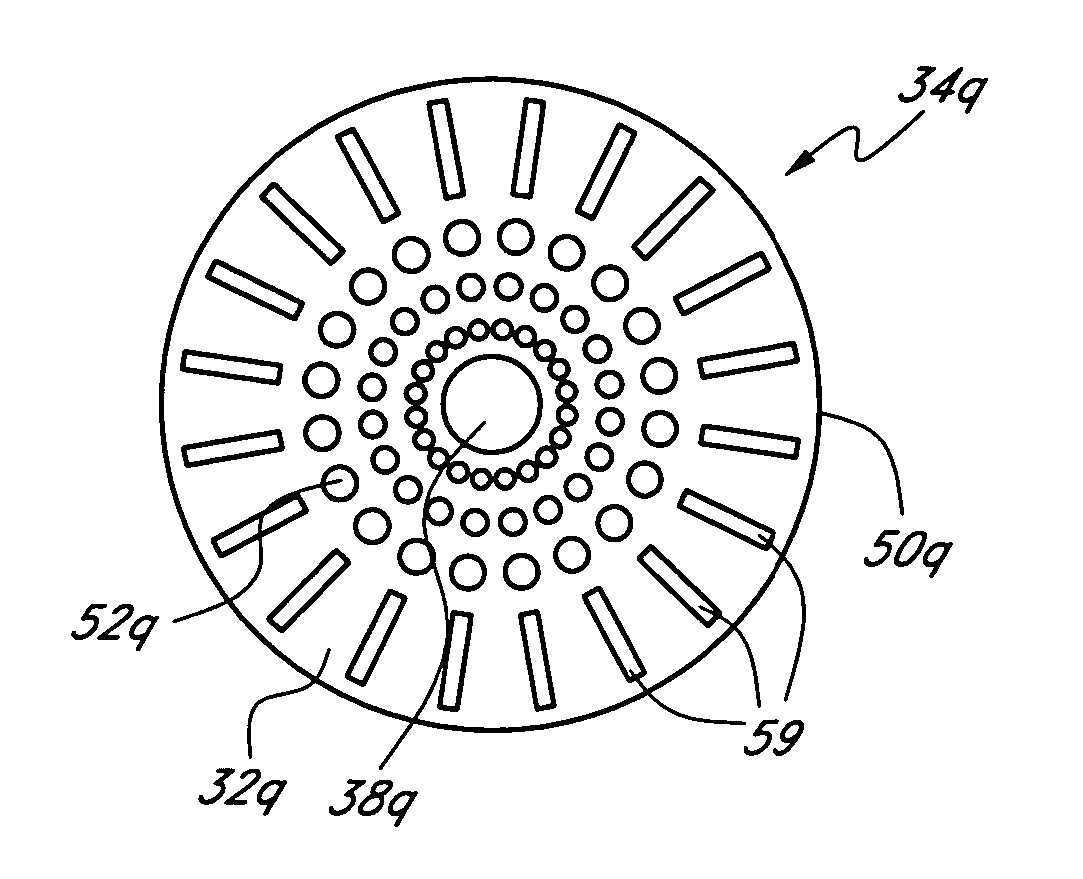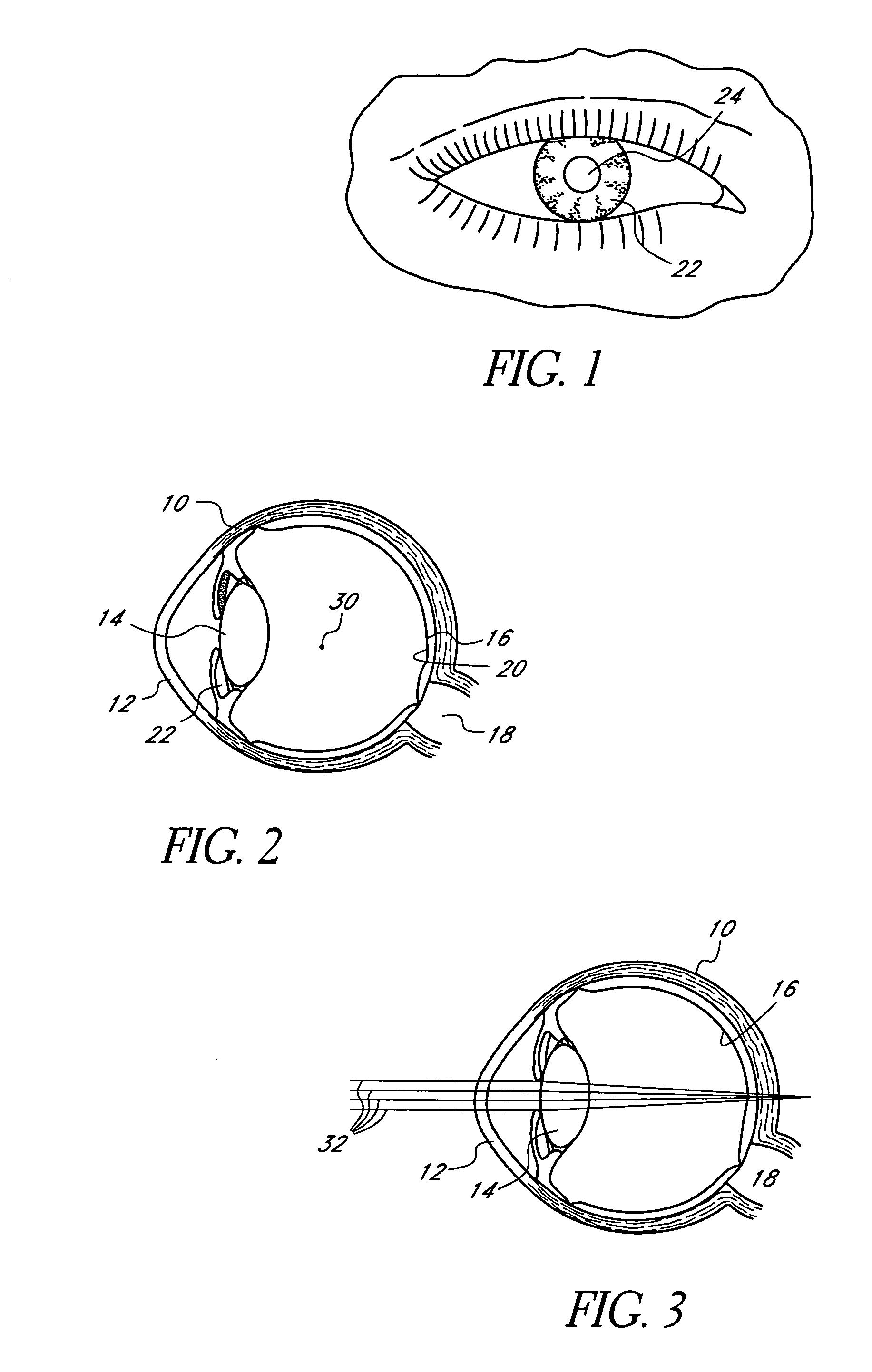Corneal optic formed of degradation resistant polymer
a polymer and degradation-resistant technology, applied in the field of corneal inlay devices, can solve the problems of inability to adapt to the changing environment, individuals cannot see up close without vision correction, and no such device is currently on the mark
- Summary
- Abstract
- Description
- Claims
- Application Information
AI Technical Summary
Benefits of technology
Problems solved by technology
Method used
Image
Examples
Embodiment Construction
[0074] This application is directed to masks for improving the depth of focus of an eye of a patient and methods and apparatuses for making such masks. The masks generally employ pin-hole vision correction and have nutrient transport structures in some embodiments. The masks may be applied to the eye in any manner and in any location, e.g., as an implant in the cornea (sometimes referred to as a “corneal inlay”). The masks can also be embodied in or combined with lenses and applied in other regions of the eye, e.g., as or in combination with contact lenses or intraocular lenses. In some applications, discussed further below, the masks are formed of a stable material, e.g., one that can be implanted permanently.
I. Overview of Pin-Hole Vision Correction
[0075] As discussed above, mask that has a pinhole aperture may be used to improve the depth of focus of a human eye. As discussed above, presbyopia is a problem of the human eye that commonly occurs in older human adults wherein the...
PUM
| Property | Measurement | Unit |
|---|---|---|
| diameter | aaaaa | aaaaa |
| diameter | aaaaa | aaaaa |
| thickness | aaaaa | aaaaa |
Abstract
Description
Claims
Application Information
 Login to View More
Login to View More - R&D
- Intellectual Property
- Life Sciences
- Materials
- Tech Scout
- Unparalleled Data Quality
- Higher Quality Content
- 60% Fewer Hallucinations
Browse by: Latest US Patents, China's latest patents, Technical Efficacy Thesaurus, Application Domain, Technology Topic, Popular Technical Reports.
© 2025 PatSnap. All rights reserved.Legal|Privacy policy|Modern Slavery Act Transparency Statement|Sitemap|About US| Contact US: help@patsnap.com



